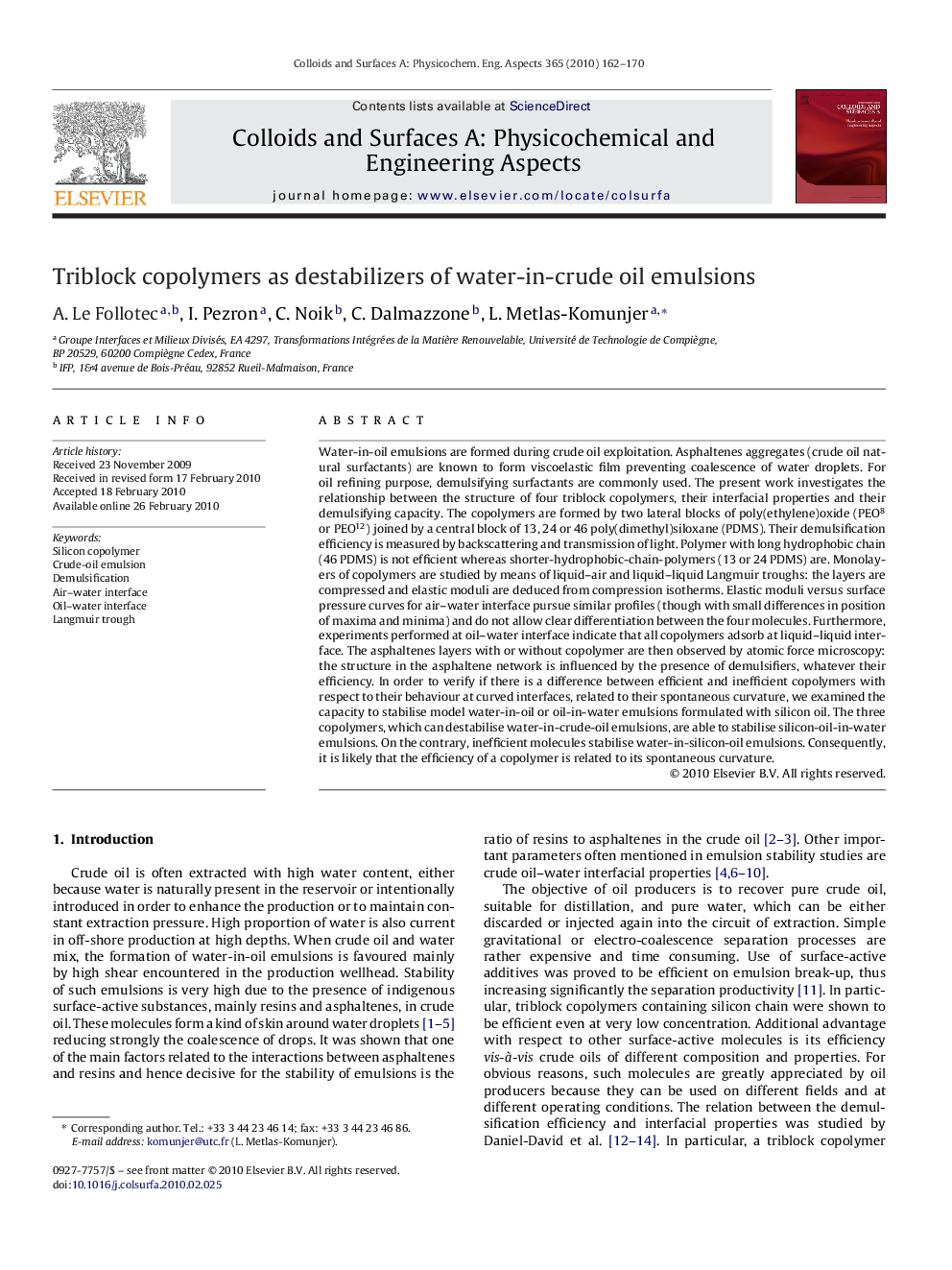| کد مقاله | کد نشریه | سال انتشار | مقاله انگلیسی | نسخه تمام متن |
|---|---|---|---|---|
| 595291 | 1454007 | 2010 | 9 صفحه PDF | دانلود رایگان |

Water-in-oil emulsions are formed during crude oil exploitation. Asphaltenes aggregates (crude oil natural surfactants) are known to form viscoelastic film preventing coalescence of water droplets. For oil refining purpose, demulsifying surfactants are commonly used. The present work investigates the relationship between the structure of four triblock copolymers, their interfacial properties and their demulsifying capacity. The copolymers are formed by two lateral blocks of poly(ethylene)oxide (PEO8 or PEO12) joined by a central block of 13, 24 or 46 poly(dimethyl)siloxane (PDMS). Their demulsification efficiency is measured by backscattering and transmission of light. Polymer with long hydrophobic chain (46 PDMS) is not efficient whereas shorter-hydrophobic-chain-polymers (13 or 24 PDMS) are. Monolayers of copolymers are studied by means of liquid–air and liquid–liquid Langmuir troughs: the layers are compressed and elastic moduli are deduced from compression isotherms. Elastic moduli versus surface pressure curves for air–water interface pursue similar profiles (though with small differences in position of maxima and minima) and do not allow clear differentiation between the four molecules. Furthermore, experiments performed at oil–water interface indicate that all copolymers adsorb at liquid–liquid interface. The asphaltenes layers with or without copolymer are then observed by atomic force microscopy: the structure in the asphaltene network is influenced by the presence of demulsifiers, whatever their efficiency. In order to verify if there is a difference between efficient and inefficient copolymers with respect to their behaviour at curved interfaces, related to their spontaneous curvature, we examined the capacity to stabilise model water-in-oil or oil-in-water emulsions formulated with silicon oil. The three copolymers, which can destabilise water-in-crude-oil emulsions, are able to stabilise silicon-oil-in-water emulsions. On the contrary, inefficient molecules stabilise water-in-silicon-oil emulsions. Consequently, it is likely that the efficiency of a copolymer is related to its spontaneous curvature.
Journal: Colloids and Surfaces A: Physicochemical and Engineering Aspects - Volume 365, Issues 1–3, 5 August 2010, Pages 162–170